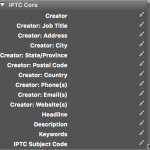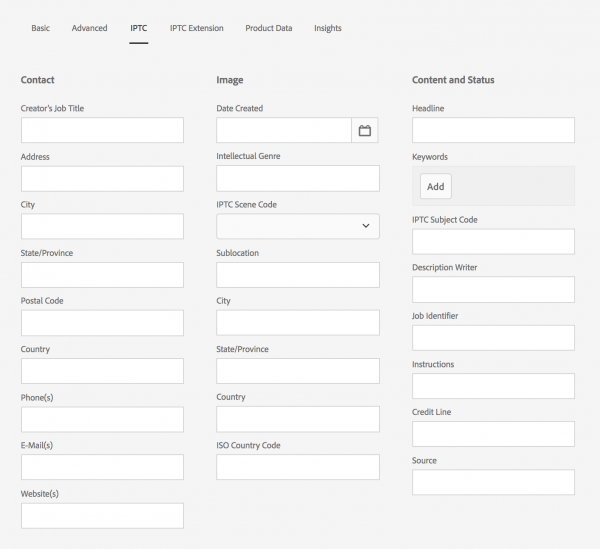Metadata is defined as data that provides information about other data. In AEM, metadata is used to describe assets and content for information purposes, findability and delivery. Simple examples might be the title of a photograph, shot date, and photographer.
AEM allows the grouping of metadata using Metadata Schemas. These schemas can be applied at the folder level, allowing a large amount of control over the metadata captured (or required) on specific groups of assets. See also 5 Tips for Creating a Unified Folder Structure.
But with control comes responsibility. When creating an enterprise asset management system from scratch, especially where there has never been one in the organization, there can be a tendency to go overboard on metadata collection. A grandiose vision often follows with schemas so large and complex that management becomes a chore and impedes the ability of asset curators to efficiently perform their duties.
Tips for Creating Metadata Schemas
Keep it simple. Here are some tips that will help you create metadata schemas that are descriptive, but simple to manage.
Tip #1 – When gathering the business required metadata to build a schema, brainstorm and try to capture everything, then try to de-duplicate and reduce the list to the minimum required. Look at sample schemas to get an idea of what others use.
Tip #2 – Try to match the business required metadata to existing IPTC properties, existing AEM properties, and use tags as much as possible for data that fits into a controlled lists. See Creating a Taxonomy.
Tip #3 – Try to keep mandatory metadata properties to a minimum, and on a single tab if possible. This will make data entry faster for the asset curator, but still capture the minimum metadata needed to complete asset ingestion.
What is IPTC and XMP?

IPTC Core in Adobe Bridge
In the 1990s the International Press Telecommunications Council (IPTC) created a common set of metadata attributes known as the Information Interchange Model (IIM). While IIM has largely been superseded by the Extensible Markup Platform (XMP), Adobe’s standardized approach to metadata, XMP includes the IPTC Core schema, and is understood by most imaging software, including Adobe Bridge and Adobe Photoshop.
Prior to AEM 6.3, displaying most IPTC metadata in AEM required manually creating metadata schemas. However, in 6.3, Adobe introduced two new schemas to handle IPTC out-of-the-box. In general, it’s a good idea to understand what is available and to not re-create elements from scratch in other custom metadata models.

IPTC Core in AEM
What is Dublin Core?
If you look at an asset’s raw metadata fields in AEM using CRXDE, you will notice many start with the dc, or the Dublin Core namespace. The Dublin Core Schema is a set of standardized metadata elements that have also been adopted by XMP.

Helpful Links
Here are a few helpful links that give more background on metadata. Study them before your next project!
- AEM Metadata: https://helpx.adobe.com/experience-manager/6-3/assets/using/metadata.html
- AEM Metadata Schemas: https://helpx.adobe.com/experience-manager/6-3/assets/using/metadata-schemas.html
- XMP: https://www.adobe.com/products/xmp.html
- IPTC Standards: https://iptc.org/standards/
- Dublin Core: http://dublincore.org/
I hope these tips help you to organize and create efficient metadata schemas!
